How to Improve Your Procurement Data


Do you keep hearing that analyzing data can enhance your procurement and enable you to make more informed decisions?
Yet, when you recall how time-consuming it can be to search for a specific piece of information, or when you encounter old or inaccurate data, it’s easy to feel overwhelmed by the effort involved.
Indeed, these are the challenges of dealing with procurement data.
However, there are practical methods to improve your procurement data and truly enhance your procurement processes.
In this article, we’ll explore five ways to improve your procurement data, bringing you the benefits that everyone is talking about.
Let’s get started.
If you’re looking to transform your procurement data into a valuable asset rather than a headache, procurement automation is worth considering.
Automation offers a streamlined approach to collecting, analyzing, and managing data, ultimately improving the efficiency and accuracy of your operations.
This is possible because procurement automation tools automate purchase requisitions, purchase orders, contract management, invoice payments, and much more.
One of the key advantages of procurement automation is the elimination of manual processes.
Manually entering the data into the system is not only tedious but it can result in inaccuracies. With automation, the risk of errors is significantly reduced.
In fact, automating these processes and harnessing the power of AI tools, rather than relying on human effort, can increase accuracy to an impressive 99%.
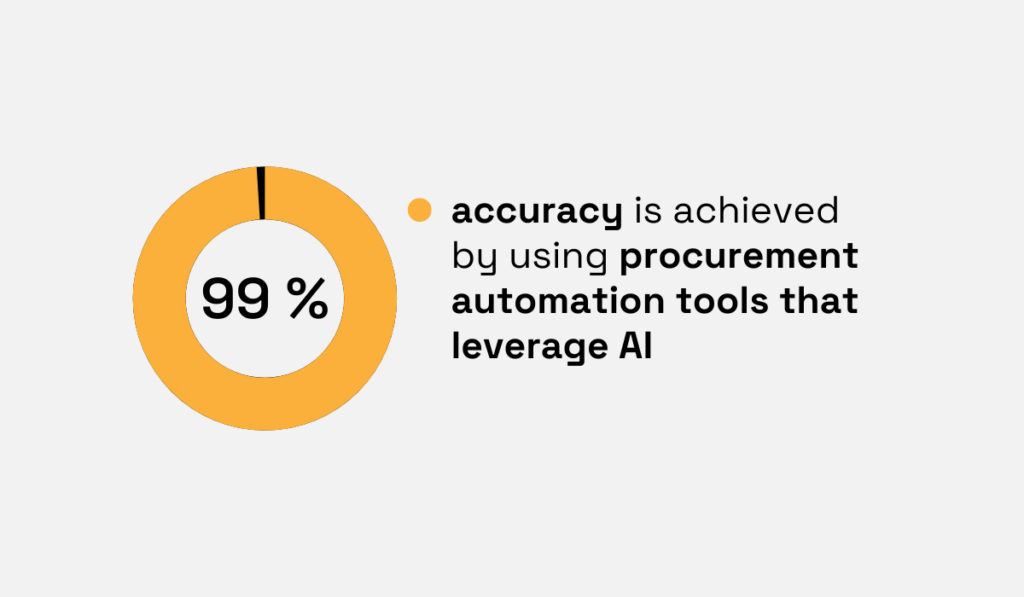
Illustration: Veridion / Data: Procurious
Given this compelling fact, it’s no wonder that 72% of chief procurement officers (CPOs) are prioritizing digital transformation in their procurement practices.
But it’s not just about internal data from your purchase orders, invoices, contracts, and supplier information.
Automation can also tap into external data sources, providing a wealth of valuable information.
This is particularly beneficial in tasks like supplier discovery and sourcing, which can be time-consuming when done manually.
By using tools that can automatically access and provide extensive information about the supplier, you no longer need to spend countless hours searching for new suppliers or validating the credibility of existing ones by sifting through mountains of outdated data.
Instead, you can base your supplier sourcing strategy on continually refreshed, precise information.
One solution that excels in this domain is Veridion, our AI-powered procurement automation tool.
Veridion provides businesses with a comprehensive, up-to-date supplier database that’s regularly refreshed.
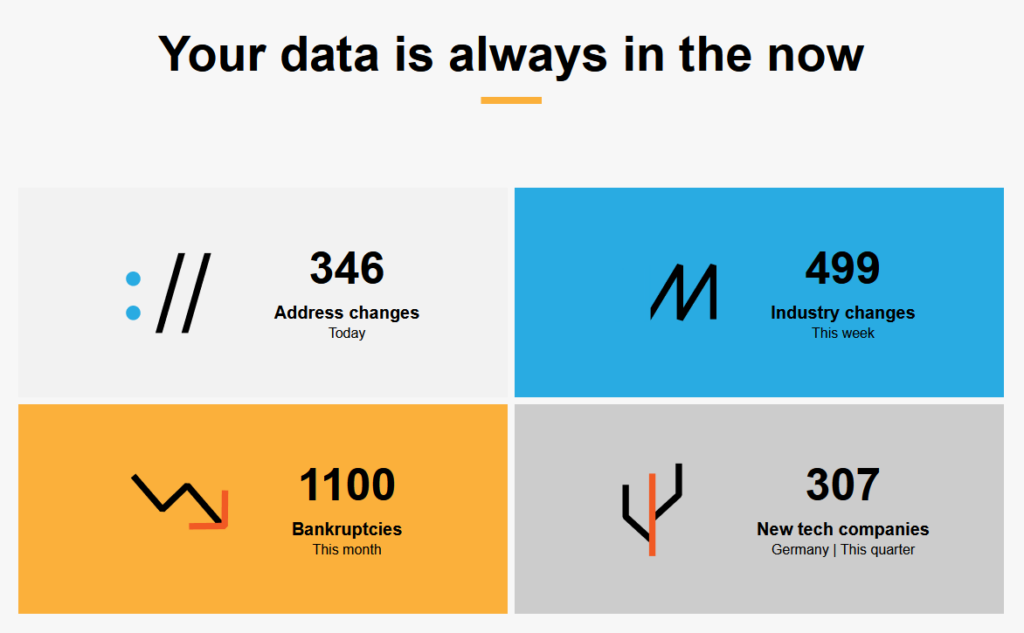
Source: Veridion
This database is a goldmine for those seeking to compare suppliers, find the perfect fit using our company search service, and mitigate supplier risk.
Let’s illustrate how our tool accomplishes this through an example.
In a recent case study, we aimed to showcase the speed and accuracy of our tool.
We were searching for manufacturers of automatic blood pressure monitors in the United States and Canada, each with over $100 million in revenue, on behalf of a global medical technology company.
In just 2.5 seconds, Veridion identified 48 potential suppliers.

Source: Veridion
Moreover, it furnished a description for each supplier along with additional specifications that simplify the selection process.
Now imagine how long it would take your procurement team to locate these suppliers manually—it would be far more time-consuming.
Additionally, there would be the added risk of the data your team discovers being outdated or inaccurate, which is never the case with Veridion.
As you can see, investing in automation can elevate your data quality since manual data entry becomes a thing of the past.
This will save you time and prevent you from making costly mistakes due to basing your decisions on incorrect data.
Furthermore, by leveraging procurement automation tools like Veridion for supplier searches, you can save time and ensure that your supplier data is up-to-date and accurate.
This, in turn, ensures that the suppliers you ultimately select are the best fit for your needs.
Standardizing your data collection and analysis is a fundamental step toward enhancing your procurement data, which, in turn, improves your entire procurement process.
When you establish uniform data collection and analysis methods, you gain numerous benefits that can significantly enhance the integrity and quality of your data.
The following image breaks them down.

Source: Veridion
In procurement, data arrives from multiple sources, such as purchase orders, supplier invoices, and contracts.
You, more than anyone, understand the sheer volume of data involved.
Now, consider what would happen if you were to request quotes from suppliers without previously setting a standard procedure for collecting this data.
You would likely receive quotes with varying levels of detail or with essential information missing.
For instance, some suppliers might include delivery dates, while others wouldn’t. One supplier might even use a different unit of measurement for quantity, leading to confusion.
When each of these procurement areas follows a different structure, evaluating and comparing quotes becomes a time-consuming and complex task.
Standardization simplifies this process, making it more efficient and reliable.
For example, you can establish a standard procedure for requesting quotes from suppliers, which includes a specific form with fields for product description, quantity, and delivery date.
This ensures that every procurement request adheres to the same structure, making comparing and evaluating supplier quotes easier.
The outcome is cleaner, more reliable data with fewer errors.
In addition to setting clear and consistent data collection methods, you can also categorize this data and establish terminology rules.
For instance, categorization could involve classifying suppliers based on their type or specialty, like “local suppliers,” “international suppliers,” or “preferred suppliers.”
This categorization helps promptly identify and select the right supplier for specific needs.
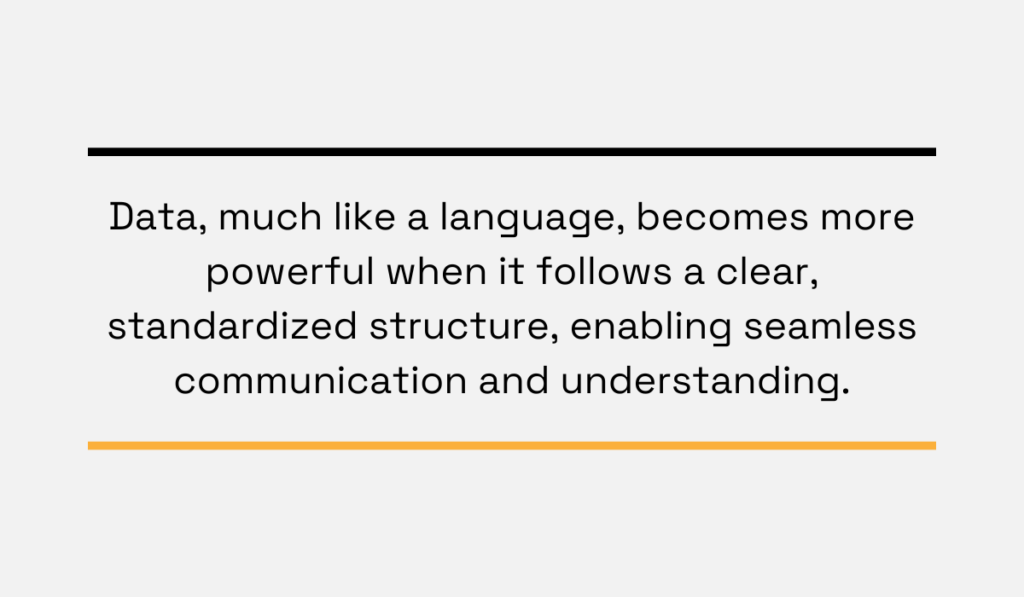
Source: Veridion
By implementing these practices in procurement, you guarantee that data is collected uniformly, organized consistently, and described using standardized terminology.
This not only makes the procurement data more reliable but also easier to work with.
When you open a report or dataset, you can immediately understand and interpret the information because it adheres to a consistent format.
Finally, standardized data is also more accessible to share with other stakeholders, resulting in swift and well-informed decision-making, a hallmark of successful procurement.
It’s a widespread misconception that more data is always better.
In reality, too much irrelevant or redundant data can hinder, rather than help, your analysis efforts. Therefore, to make data truly work in your favor, selecting the right data is essential.
This means prioritizing quality over quantity and focusing on information that directly serves your procurement objectives.
Therefore, the first step in your data management strategy is to establish clear procurement objectives.
Building on these objectives, you can identify and monitor key performance indicators (KPIs).
And to do this effectively, you need to gather data that is directly relevant to your objectives and these specific indicators.

Source: Veridion
For instance, if your goal is to enhance sustainability in procurement, it’s crucial to track KPIs related to this objective.
Here, you’ll need data demonstrating supplier adherence to ESG (environmental, social, and governance) criteria because this data aligns directly with your goal.
Similarly, if your broader objectives include optimizing procurement processes, mitigating procurement risks, or saving costs, you should identify which KPIs to track.
Once you’ve identified these KPIs, your focus should shift to collecting and analyzing data that directly corresponds to them.
The insights derived from gathering this precise data and monitoring KPIs will help you identify room for improvement in your procurement practices.
Conversely, if you gather and analyze data without a specific objective or well-defined purpose, you can face several significant issues:
| Information Overload | You risk being swamped by numbers, charts, and reports, making it challenging to extract meaningful insights. |
| Resource Drain | Collecting data with no clear purpose consumes valuable time and resources. |
| Confusion and Inefficiency | Your team can become confused and inefficient when there’s no clear guidance on what data to prioritize. |
| Ineffective Decisions | Data collected without a clear purpose may not align with key procurement goals, resulting in ineffective decisions. |
To steer clear of these issues, prioritize choosing only the right data for analysis—the kind that aligns with your procurement goals.
This approach to data collection and analysis will ensure your efforts yield meaningful insights that will enhance your procurement.
Enhancing the effectiveness of procurement data hinges on another vital factor—making it easily accessible to all relevant teams within your organization.
When data is scattered across spreadsheets, hidden within different teams, and siloed in various systems, finding the information you need can be a time-consuming and frustrating process.
And, as Jaggaer’s VP of Direct Procurement Strategy Georg Rösch says, it’s difficult to make sense of such data.
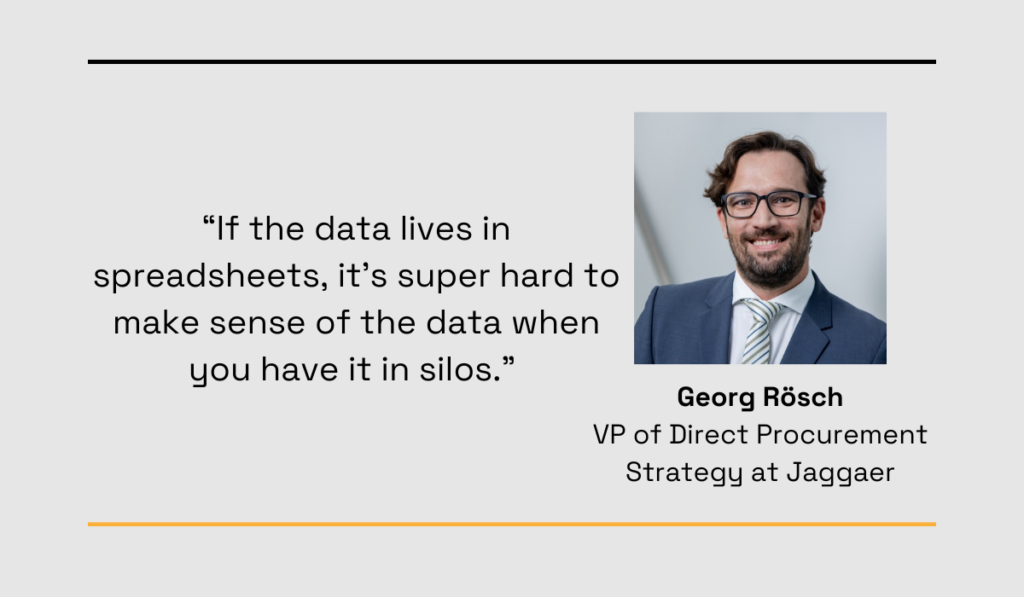
Illustration: Veridion / Quote: Supplychaindive
To overcome this challenge, it’s crucial to establish a centralized data repository—a digital library of sorts, where all procurement data is neatly organized and readily accessible.
This repository should not be limited to the procurement team but extended to other key departments as well, including finance, operations, and senior management.
The incorporation of automation tools into your procurement process acts as a bridge to this centralized repository.
These tools streamline data collection, storage, and retrieval, making it easier for everyone to access.
With this technology in place, anyone with authorized access can quickly retrieve vital information, such as purchase orders, supplier details, supplier performance, contract specifics, and spending data.
Why is it essential for other departments to have this level of data visibility? Here are a few key reasons:
In essence, the effort to make procurement data easily accessible extends beyond the procurement team.
It’s about creating a data driven culture where various departments work collaboratively, use the same up-to-date information, and make decisions based on it.
The final step in enhancing your procurement data’s effectiveness is building a data-literate team.
Why is this crucial?
Because the value of procurement data is unlocked when it’s transformed into valuable insights, and this transformation can only be accomplished by skilled individuals.
Jonathan Pastrikos, Senior Business Advisor at BDC, highlights a critical point:
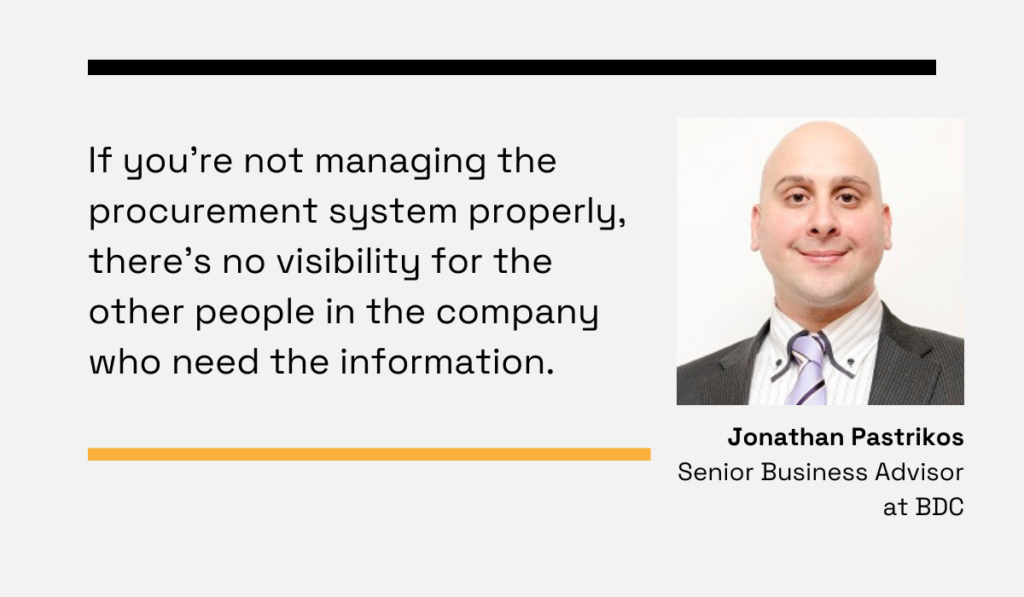
Illustration: Veridion / Quote: BDC
This statement underscores the significance of having skilled individuals who can make use of procurement automation and its data.
Automated procurement systems generate a wealth of data and bring opportunities to improve efficiency, reduce costs, and mitigate risks.
However, this valuable resource remains largely untapped without a data-literate procurement team that can convert data into actionable insights.
In essence, you need to assemble a data-literate team that not only grasps the importance of data quality but can also translate data into actionable insights and share them across the organization.
Portt’s whitepaper, “Improving Data Literacy for Better Decision Making in Procurement” highlights a critical challenge in the industry—bridging the gap between recognizing the potential of data in procurement and realizing its tangible value.
A data-literate procurement team can bridge this gap effectively.
So, how can you go about building such a team?
You can initiate this process during the hiring stage by seeking individuals with expertise in procurement and data analysis.
Yet, don’t overlook your existing procurement team members.
Gartner’s data literacy guide outlines a three-step approach to how you can improve your team’s data literacy:
In conclusion, by building a data-literate team, you prepare your organization for a future where data plays a central role in procurement.
This final step ensures that your procurement data becomes a valuable asset that drives informed decision-making and operational efficiency.
And here you have it.
By investing in automation, standardizing data collection and analysis, and focusing on data that directly relates to your procurement goals, you can significantly improve the effectiveness of your procurement data.
Moreover, when you build a team that understands data and can turn it into useful insights that can be easily shared across departments, you unlock the full potential of your procurement data.
The benefits are significant: making decisions based on data in real-time, speeding up the process of finding and sourcing suppliers, mitigating risks, and realizing cost savings.
If these advantages align with your goals, it’s the right moment to take the initiative and enhance your procurement data.